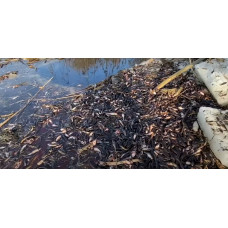Death of fish - mass death of aquatic animals as a result of reduction of dissolved oxygen content in water, used for respiration of organisms and decomposition of organic residues. Death of fish can be summer and winter. In winter, they occur as a result of established for a long period of time powerful ice cover. They come gradually, oxygen is spent on oxidation of bottom sediments rich in organic matter, or humi- new substances and iron oxide compounds coming from swampy areas. Summer onset is usually nocturnal and sudden. As a result of reduced photosynthetic activity of plants, oxygen supply to the water stops, the oxygen accumulated during the light period is used for respiration of animals, algae and bacteria. Summer usually occurs in reservoirs with standing water with large amounts of organic matter.
Oxygen enrichment of water is usually accomplished in two ways: by capture and dissolution from the surrounding air (by wind and rainfall) and by algae (photosynthesis). Almost all shallow bodies of water without currents, as well as those subject to eutrophication, are susceptible to some degree of die-off. Fish species more sensitive to oxygen deficiency (salmon, sturgeon, perch), as well as crayfish, mollusks (pearl mussel, toothless mussel) and some species of water bugs are the first to die. Mass poisoning by poisonous substances is not considered as a swamping.
The main methods of controlling the death of fish are protecting the water body from the discharge of organic and other substances that absorb oxygen from the water (e.g. iron oxide compounds) and oxygenating the water.
Death of fish
Tags: death of fish

